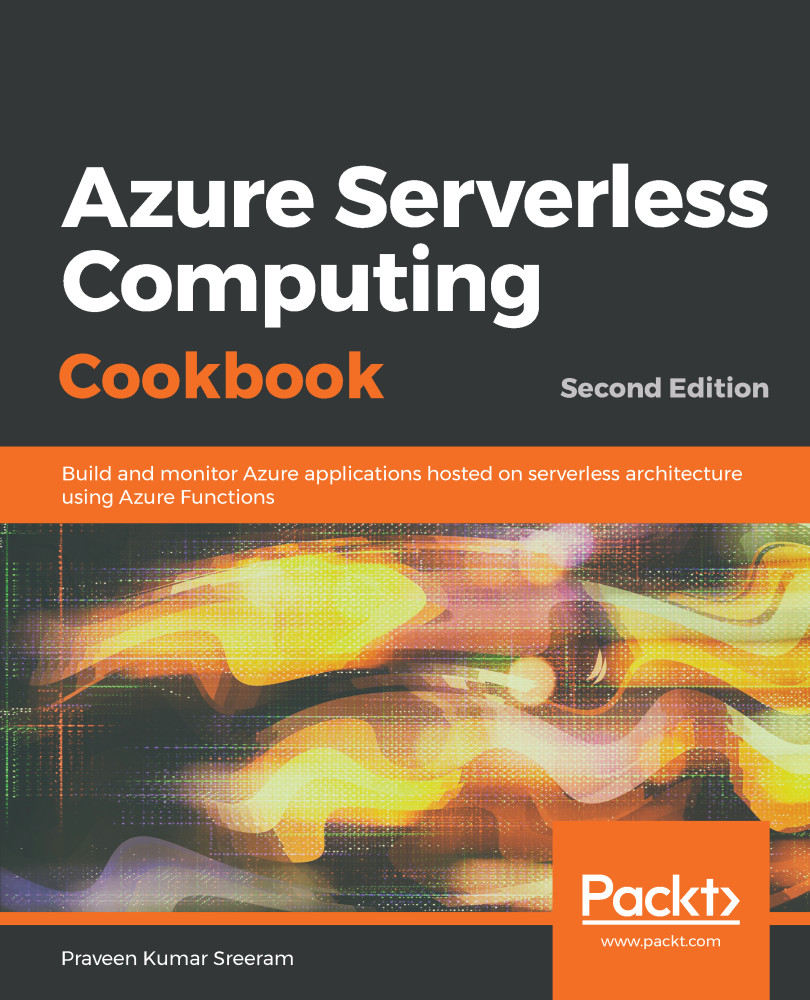You have now learned how to enable the authorization of an individual HTTP trigger by setting the Anonymous Level field with the value function in the Integrate tab of the HTTP trigger function. It works well if you have only one Azure Function as a backend web API for one of your applications and you don't want to restrict access to the public.
However, in enterprise-level applications, you will end up developing multiple Azure Functions across multiple function apps. In those cases, you need to have fine-grained granular access to your Azure Function for your own applications or for some other third-party applications that integrate your APIs in their applications.
In this recipe, you will learn how to work with function keys within Azure Functions.



